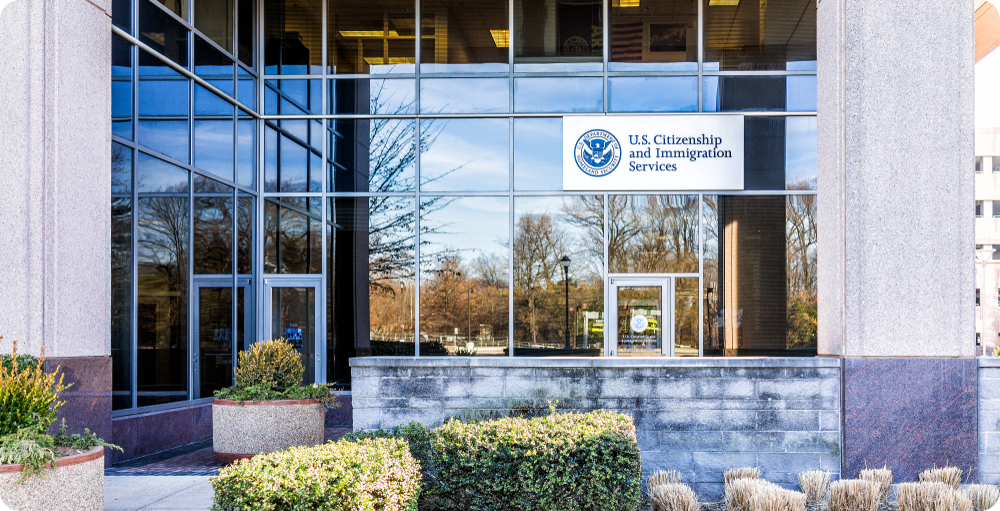In a recent podcast with Homeland Preparedness News, IIUSA’s Executive Director, Aaron Grau, and a representative of an investor group discuss the current and potential future states of the program. While investor confidence is largely restored in the program, past investors don’t like the visa set-asides for future investors. And decertification of past regional centers “really fouls things up,” says Grau. The EB-5 organization has been trying to get USCIS to reconsider recertification, but "so far, it seems as though our pleas have fallen on deaf ears.”
Joining Grau in this discussion is Rajvir Batra of the American Immigrant Investor Alliance, an association representing more than 5,000 EB-5 investors around the world.
Why did EB-5 almost die with the extended program lapse?
Straddling the line between diplomacy and honesty, Grau admits a faction of the EB-5 community believed the deal IIUSA had helped broker with Congress was just not good enough. Much of the EB-5 industry is aware that group was at least in part fronted by big-city developer interests. “Rather than take a bird in the hand,” stated Grau, "there was an effort to go for two in the bush, and the outcome of that was a lapsed program.”
Batra, who is closely tied to the investor community, declares that while some investors didn’t even know the program had lapsed, many suffered irreparable harm, like backlogged Chinese investors, many of whom have children “aging out” — becoming to old to qualify for EB-5 program benefits.
Integrity measures: what are they meant to address and how will they work?
Grau seems to suggest that the biggest integrity issue was the treatment of investors. “Everybody on Capitol Hill was seeking to impart and infuse into the program a measure of integrity that assured that good faith investors were protected from bad faith.”
From an ethical point of view, Grau may be right, but from a political one this isn’t an accurate statement of the impetus for new EB-5 legislation. Senator Grassley’s unbridled criticism of the fraud and abuse in the EB-5 program focused much more on gerrymandering and big-money interests than it did on foreign investor protection.
A less arguable point that Grau makes is that the program now has “the longevity it needs.” A runway of more than five years certainly gives confidence to not only investors but industry stakeholders and businesses looking to raise EB-5 capital.
Can the new Reform and Integrity Act prevent another fraud like Jay Peak?
Jay Peak was the biggest EB-5 fraud of all-time and generated massive negative media and political attention for the program as hundreds of millions of dollars were misappropriated by a corrupt developer — possibly with government assistance. Could such a scandal happen again now that the EB-5 Reform and Integrity Act of 2022 has become law?
While Grau admits that you can’t legislate good behaviour, he believes the new legislation will make another Jay Peak unlikely. “It’s certainly going to be a heck of a lot harder for anybody to mistreat or take advantage of investors now than it was before.”
Investor confidence is restored — but older investors don’t like new set-asides
In the recent past, new stories about EB-5 fraud, like Jay Peak, have eroded investor confidence, says Batra. He points out that for many foreign nationals it’s hard to perform due diligence on an EB-5 project.
Grandfathering was his organization’s primary concern, and the new legislation ensures any petitioner who makes an EB- 5 investment by September 30, 2026, will be protected going forward — no matter what happens to the program.
He does admit, however, that the new set-asides — reserved visas that create a brand-new lineup for any investor, including those from backlogged countries — is a concern for his group as new investors leap frog past those who invested years ago.
How is regional center recertification going to impact the program?
“This really fouls things up,” admits Grau tersely. When pushed for more explanation, he says that this was not the intent of the Reform and Integrity Act: “There was going to be some level of reconciliation between USCIS and existing participants in the program vis a vis those integrity measures. But Congress never intended to eliminate the regional center program and start from scratch.”
Thus, he strongly believes that USCIS’s interpretation that requires past regional centers to recertify “is so counterproductive…. if you force all regional center programs to start from the beginning, the number of issues are exponential and paramount.”
One of the main issues he sees with this is deciding who gets recertified first. Another is that while waiting for approval, these entities “can do no business.” He likens reauthorization followed up with recertification of all regional centers to building a new car and not giving it any gas — it may exist but it is not functional.
Further, Grau wonders what responsibilities decertified regional centers have to USCIS regarding the oversight of billion of dollars of investors of investor capital. “I would argue that they have absolutely no need to say anything to anybody anymore, because they've just been told that they no longer exist.”
And if that’s the case, Grau worries that transparency requirements cannot function as they were intended to by the new legislation. “And all of the efforts that Grassley and Leahy wanted to assure that were in place are gone, and bad actors could very well end up having a free pass.”
IIUSA has been involved in pushing for USCIS to reconsider its position on recertification, but "so far, it seems as though our pleas have fallen on deaf ears.”
Representing past investors, Batra agrees with Grau that the deauthorization of past regional centers is a major problem — especially if a regional center goes out of business and investors need evidence of job creation to remove conditions on their Green Cards.
What work needs to be done on Reform and Integrity Act now?
Often times after a bill passes, much work still needs to be done with the legislation. Is this the case now with the Reform and Integrity Act? Grau believes it is, but he also acknowledges that, “unfortunately, there seems to be a level of extreme fatigue on this matter on Capitol Hill. And an indication that this is obviously an administrative issue now. “
Still, IIUSA is in the process of “developing legislative texts” that it wants to share with Congress. Will they have the attention of people like Grassley and Leahy? This is, for now, the unanswered question.
Processing times, says Batra, is an EB-5 issue that needs addressing. As an example, he points to the provision that says an I-829 petition should be adjudicated in just 90 days. “That’s what the law says. And USCIS is clearly violating that law.”
He also cites the new provision of a fee study to evaluate processing times, but he admits it’s not binding and not something he expects anytime soon.
Manpower or willpower: What’s the cause for slower processing times?
Addressing a question that has stymied the industry for the past several years, Batra speculates that EB-5 is simply not a priority to USCIS. “We don't have a lot of evidence for this but my take on this is that in the past there has been an effort to discriminate against EB-5 applications by USCIS. There is no other explanation for that.”
Unfortunately, Grau, agrees that USCIS is “slow-walking” EB-5 petitions. Staffing could be part of the problem, he speculates, but a lack of prioritization must be at the root of the issue. “It's just been the same story for too long for any rational person to assume otherwise.”
What does EB-5 look like in 2025?
Expecting that the issues we face now, like recertification, will be long since resolved, what will the EB-5 program look like in three years?
Grau is optimistic that the program can eclipse its heyday from about 2008 to 2015. A driver of that will be the visa set-asides for rural, high-unemployment, and infrastructure projects. These reserved visas allow investors from backlogged countries (like China and India) to get into a new line-up with immediately available visas. He expects to see “a lot of new rural projects, which I think was part of congressional intent”
Another reason for optimism is that Grau sees interest in the program rising across the world, especially from non-traditional countries.
Faster processing and better oversight are what Batra hopes to see in EB-5 in 36 months. If those two things happen, he is confident that the image of the program will benefit. “You’re gonna see a more positive perception of EB-5 and the benefits and the jobs it creates in the media and among the American society in general.”
Listen to the Homeland Preparedness News podcast “The Future of EB5, with Aaron Grau & Rajvir Batra”









